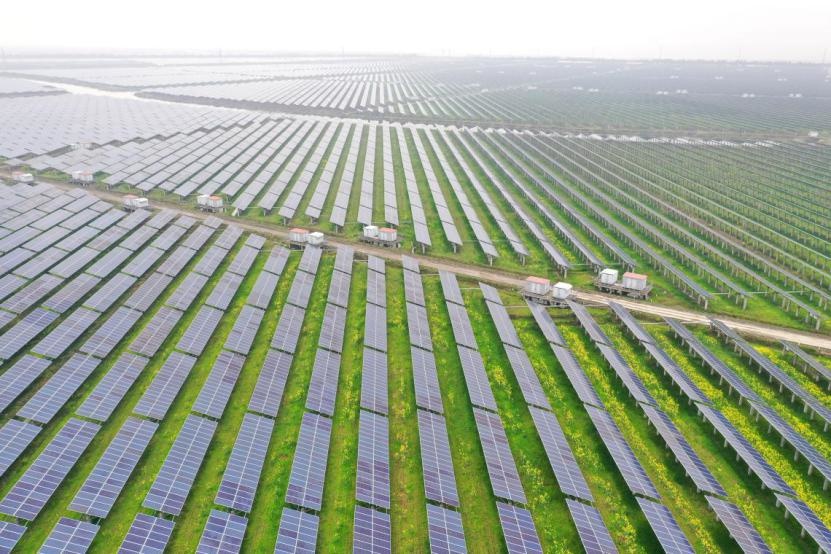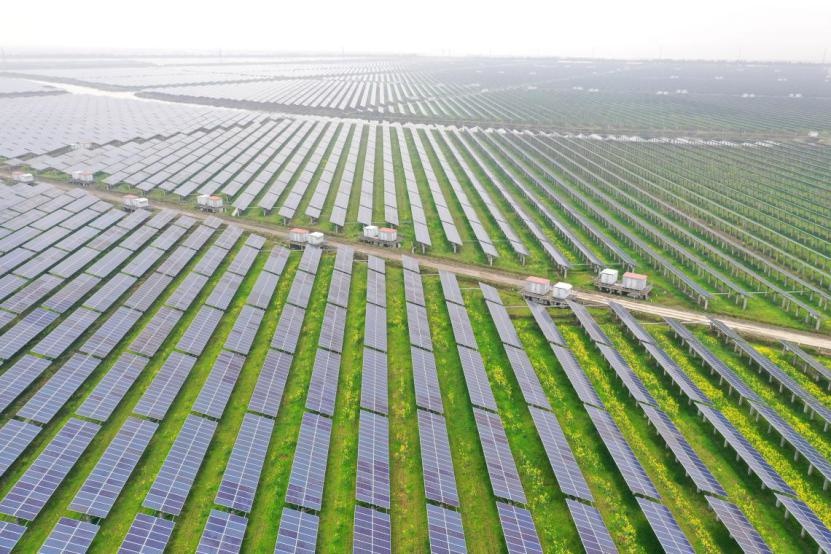Source: Global Times

Photo taken on March 14 shows a photovoltaic power station in Wenzhou, East China’s Zhejiang Province. (Photo by Duan Junli/People’s Daily Online)
Digitalization, artificial intelligence (AI) and cybersecurity will be the key trends in the future development of the photovoltaic (PV) industry as part of China's journey to achieve its carbon peak goal and carbon neutrality vision. At that stage electricity is expected to replace fossil fuels to reduce carbon emissions, according to a Wednesday report.
The report, published by China's Huawei on Wednesday, in cooperation with technology experts, institutes and smart tanks, introduced 10 main trends in the development of smart PV industry, the Global Times learned.
The report predicted that in 2025, more than 90 percent of power plants in China will achieve full digitalization with the development of 5G and cloud technologies, making PV plants simple, smart and efficient.
Meanwhile, more than 70 percent of PV plants will be equipped with AI technologies, according to the report. A Virtual Power Plant system, known as VPP, will be put in operation to help manage PV plants in 2025.
Cybersecurity will be a key concern. It is requested that every PV plant should be able to defend itself from cyberattacks and avoid major accidents, Huawei Smart PV Marketing General Manager Alex Wu said during the announcement of the report. Wu noted that protecting users' privacy will also be a priority.
Zhou Taoyuan, president of Huawei's digital power products line, said on Wednesday that with China's 14th Five-Year-Plan and carbon goals, the PV industry has met a historic new opportunity. Based on Huawei's experiences in platform technologies and PV during the past decade, the company will work with other partners in the industry to achieve a high-quality development.
By 2050, the proportion of renewable energy will account for 86 percent of the power generation sector. Wind energy and PV will account for nearly 70 percent, becoming the main thriving force in the sector.
Huawei has deployed many patents to develop new technologies, as its PV inverters, which have been sold to more than 60 countries and regions around the world, Chen Guoguang, Huawei Smart PV Business President, told the Global Times on Wednesday.
Source: Global Times
The report, published by China's Huawei on Wednesday, in cooperation with technology experts, institutes and smart tanks, introduced 10 main trends in the development of smart PV industry, the Global Times learned.
The report predicted that in 2025, more than 90 percent of power plants in China will achieve full digitalization with the development of 5G and cloud technologies, making PV plants simple, smart and efficient.
Meanwhile, more than 70 percent of PV plants will be equipped with AI technologies, according to the report. A Virtual Power Plant system, known as VPP, will be put in operation to help manage PV plants in 2025.
Cybersecurity will be a key concern. It is requested that every PV plant should be able to defend itself from cyberattacks and avoid major accidents, Huawei Smart PV Marketing General Manager Alex Wu said during the announcement of the report. Wu noted that protecting users' privacy will also be a priority.
Zhou Taoyuan, president of Huawei's digital power products line, said on Wednesday that with China's 14th Five-Year-Plan and carbon goals, the PV industry has met a historic new opportunity. Based on Huawei's experiences in platform technologies and PV during the past decade, the company will work with other partners in the industry to achieve a high-quality development.
By 2050, the proportion of renewable energy will account for 86 percent of the power generation sector. Wind energy and PV will account for nearly 70 percent, becoming the main thriving force in the sector.
Huawei has deployed many patents to develop new technologies, as its PV inverters, which have been sold to more than 60 countries and regions around the world, Chen Guoguang, Huawei Smart PV Business President, told the Global Times on Wednesday.
Source: Global Times
 Menu
Menu
 Digitalization, AI and cybersecurity will be the key trends in smart PV industry and China’s journey to achieve carbon peak, neutrality: Huawei report
Digitalization, AI and cybersecurity will be the key trends in smart PV industry and China’s journey to achieve carbon peak, neutrality: Huawei report
















